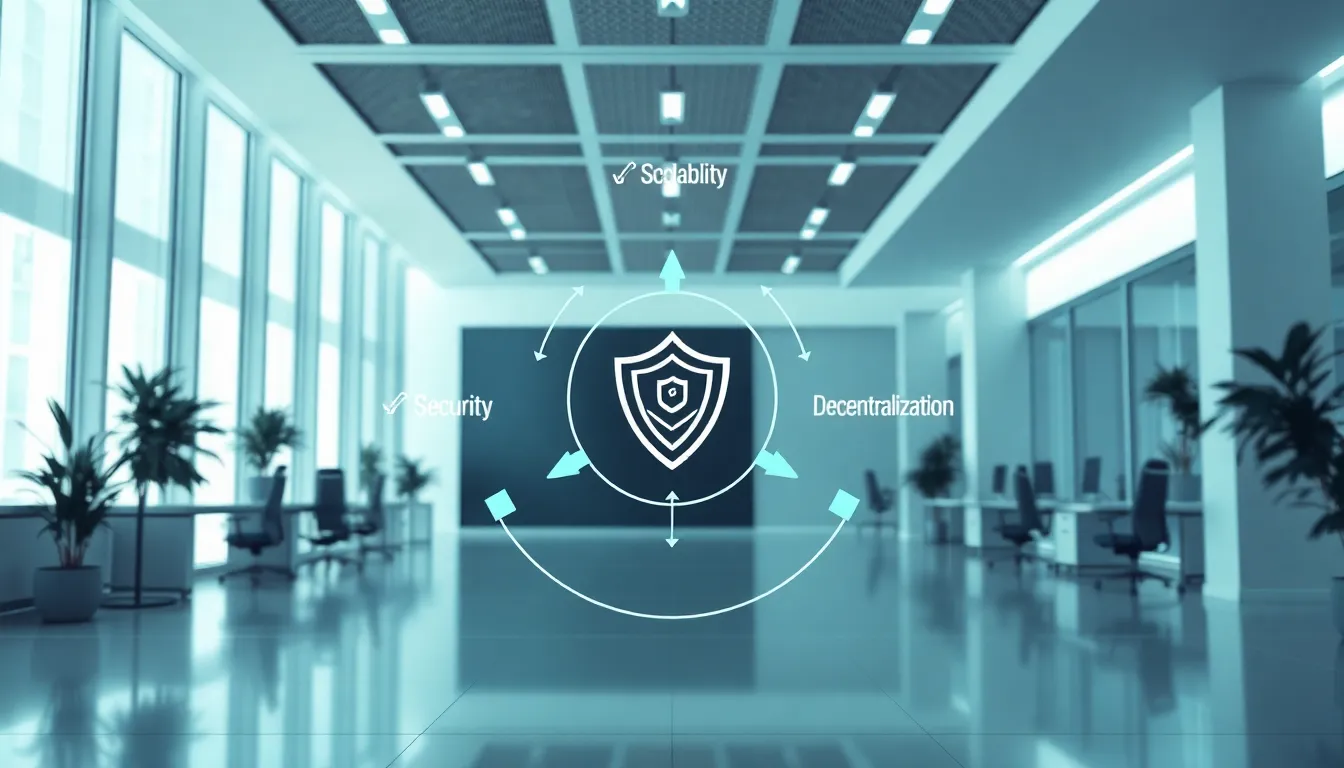When it comes to blockchain technology, there’s a term that causes a stir among enthusiasts and experts alike: the blockchain trilemma. Ever tried balancing three bowling pins while riding a unicycle? That’s much like what blockchain developers experience today. They aim to create a system that is scalable, secure, and decentralized, all at once. The catch? Trying to optimize one often sacrifices the others. Let’s jump into this fascinating conundrum and explore how it shapes the future of cryptocurrency and decentralized applications.
Table of Contents
ToggleUnderstanding the Blockchain Trilemma

The blockchain trilemma is an essential framework for understanding the foundational challenges of blockchain development. It asserts that achieving all three desired aspects, scalability, security, and decentralization, is nearly impossible without trade-offs. Each aspect represents a crucial part of what makes blockchain a viable alternative to traditional databases.
Scalability refers to a blockchain’s ability to process a growing number of transactions swiftly. When it works flawlessly, users experience fast transaction times and lower fees. But, increasing scalability often dampens security and decentralization, so creating a dilemma.
Security ensures that the network remains resistant to attacks and fraud. You wouldn’t want your Bitcoin to vanish into thin air, right? Unfortunately, boosting security measures can slow down transaction speeds and complicate decentralization.
Last but certainly not least, decentralization empowers users by preventing any single entity from controlling the network. While decentralization enhances trust and resistance to censorship, it can also limit scalability as more nodes typically mean more complex coordination.
The Three Core Aspects
Scalability Challenges
Scalability is the bedrock of any successful blockchain. Can it handle a massive volume of transactions like credit card networks? Often, blockchain systems like Ethereum struggle during peak times, leading to delayed transactions and skyrocketing fees.
Security Considerations
Without adequate security, the very foundation of a blockchain crumbles. Hacks have proven to be catastrophic, illustrating just how critical this aspect is. But, bolstering security layers can constrict transaction speeds, reopening that pesky trilemma.
Decentralization Importance
Decentralization is an enticing feature for many blockchain advocates. It fosters trust and community involvement. A decentralized network is harder to censor or manipulate. If everything runs smoothly, users enjoy a trustworthy and autonomy-centric experience. Yet striking the right balance with scalability and security often proves elusive.
Trade-offs in the Blockchain Trilemma
Navigating the blockchain trilemma demands careful consideration of each core aspect. Developers often find themselves grappling with trade-offs that can significantly affect user experience. For instance, enhancing scalability might necessitate adopting consensus mechanisms that compromise security. Similarly, if a blockchain prioritizes security, it may force delays in processing times.
One common set of compromises involves using consensus algorithms like Proof of Work (PoW) or Proof of Stake (PoS). While PoW is secure, it struggles with scalability when compared to PoS, which can process more transactions but may be perceived as less secure.
Eventually, trade-offs challenge developers to prioritize one aspect over others, leading to ongoing debates around which sacrifices are justified. Key questions echo in the community: Should the focus be on speed, security, or decentralization? There isn’t a one-size-fits-all solution, as different use cases demand varying levels of each component.
Real-World Examples
Potential Solutions to the Trilemma
To tackle the blockchain trifecta, developers have devised several innovative solutions. These range from innovative protocols to unique governance structures that engage the community while addressing scalability.
Layer 2 Solutions
Layer 2 scaling solutions like the Lightning Network aim to process transactions off the main chain to improve speeds. This enables faster, cheaper transactions while relieving congestion on the primary network. Users enjoy lightning-fast transactions without sacrificing security.
Sharding Techniques
Sharding divides the database into smaller, more manageable pieces, allowing for simultaneous transactions across various segments of the network. This technique enhances scalability while maintaining security and decentralization. Yet implementing sharding introduces its own set of challenges, including greater complexity.
Cross-Chain Interoperability
Emerging technologies promoting cross-chain interoperability are paving the way for smoother blockchain integration. By allowing different blockchains to communicate, users can harness the power of multiple networks simultaneously, both enhancing performance and security. This newfound collaboration is crucial to circumventing the trilemma.
Future of Blockchain Development
The future of blockchain development hinges on solving the trilemma. Innovations in scaling solutions, consensus algorithms, and governance models are captivating developers and stakeholders alike.
Projects are exploring federated blockchains or hybrid models that balance public and private network traits. The objective remains the same: achieving a sustainable equilibrium between scalability, security, and decentralization.
Future advancements may introduce novel technologies such as quantum-resistant algorithms, which can bolster security while enhancing operational speed. As the landscape of blockchain continues evolving, developers will undoubtedly experiment with new strategies to meet the trilemma head-on.



